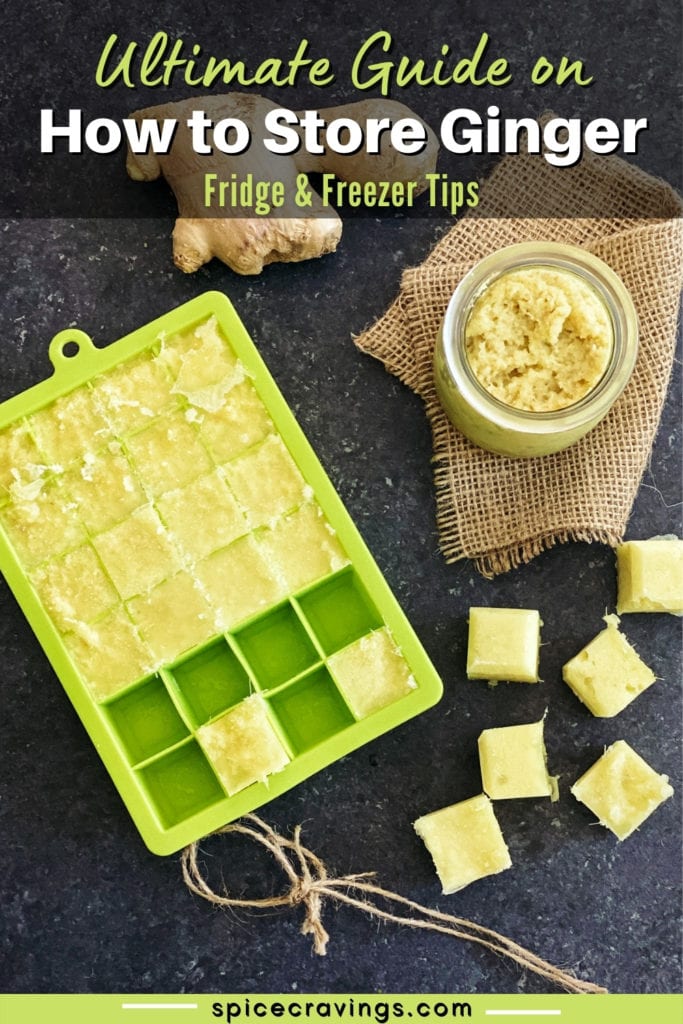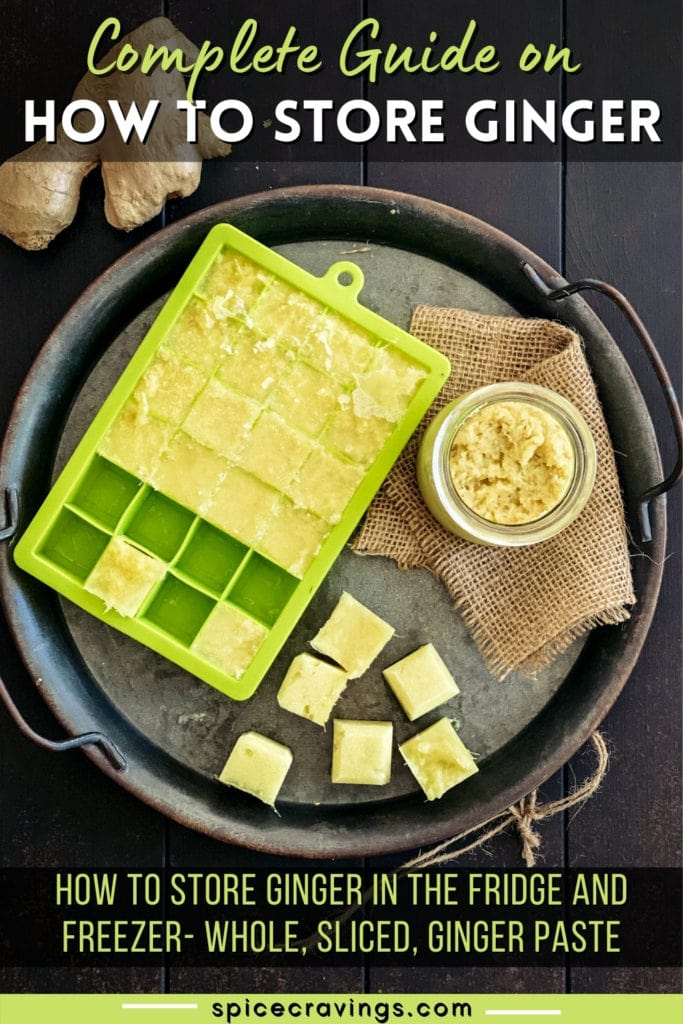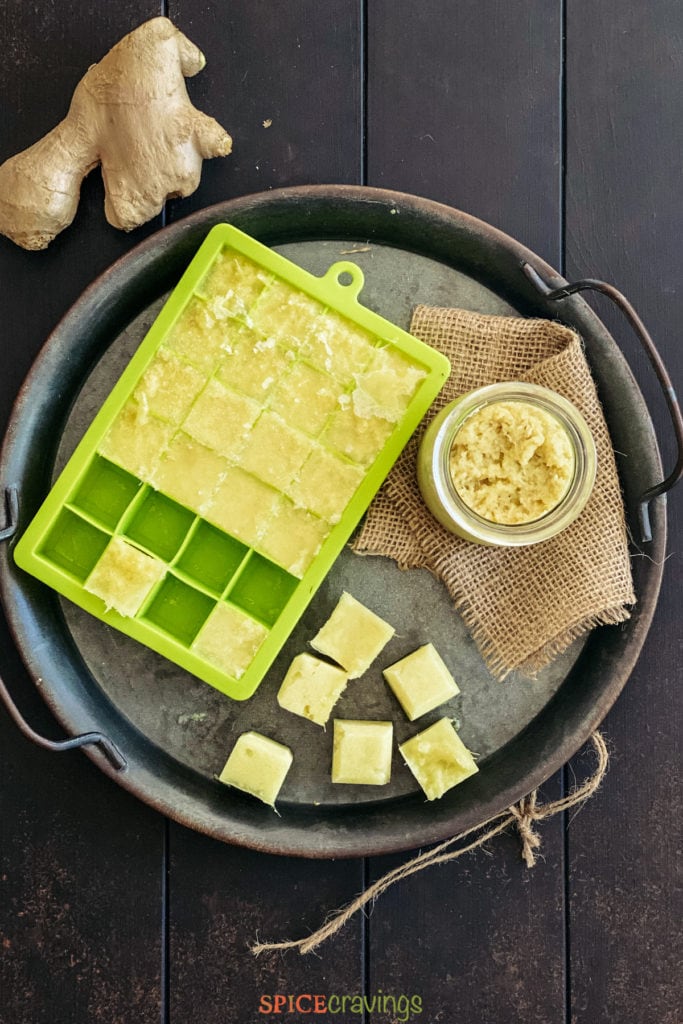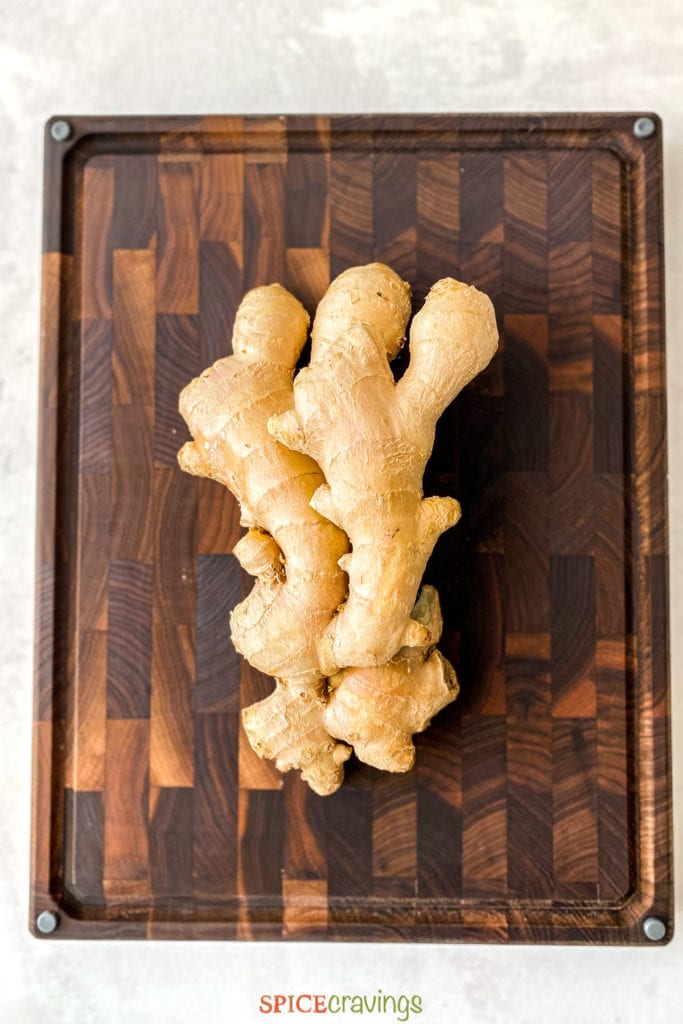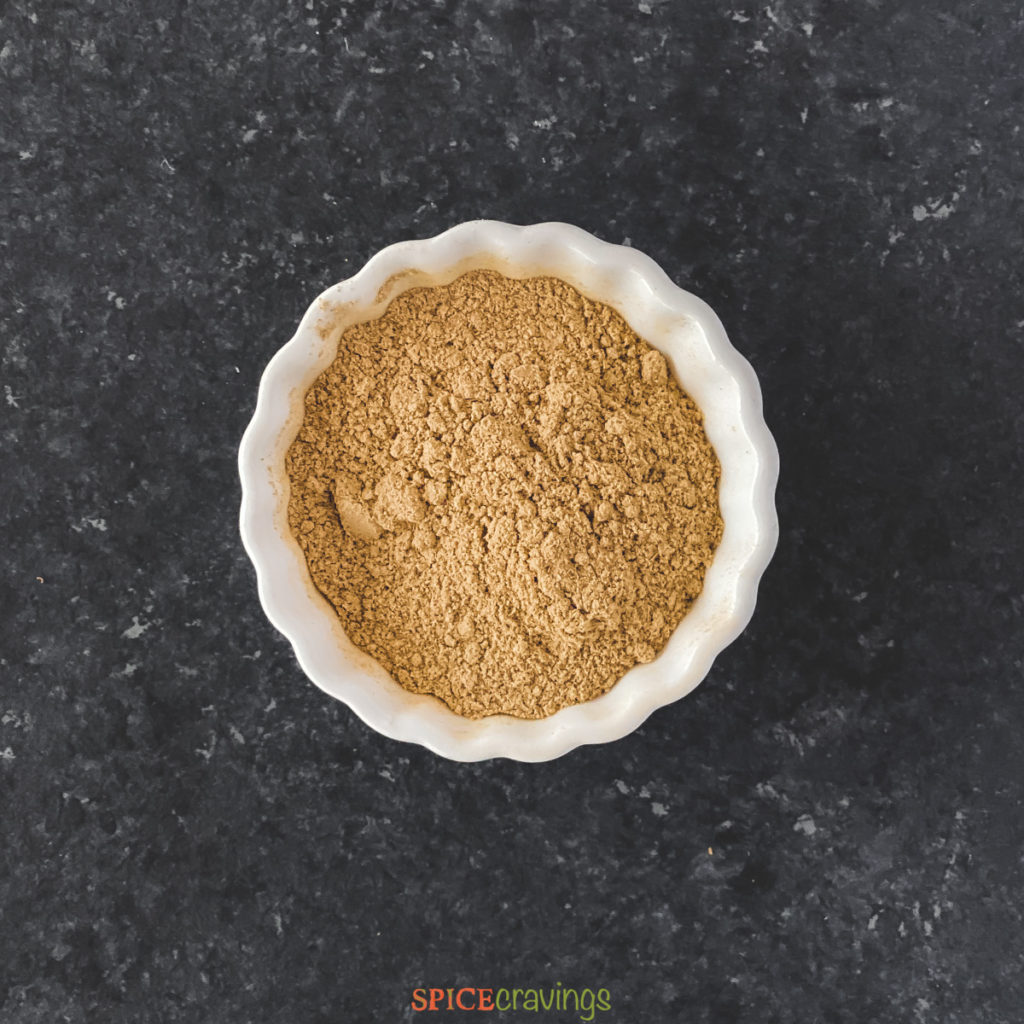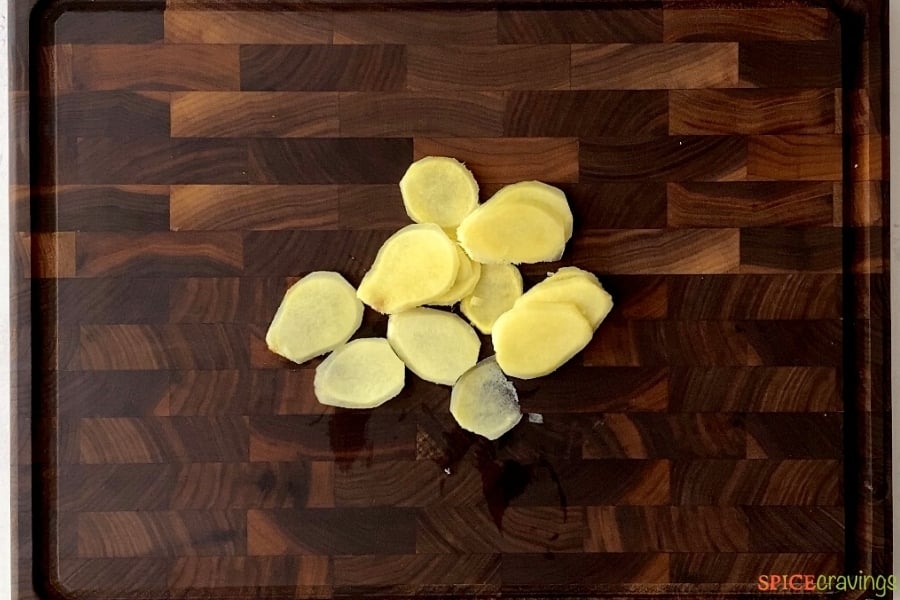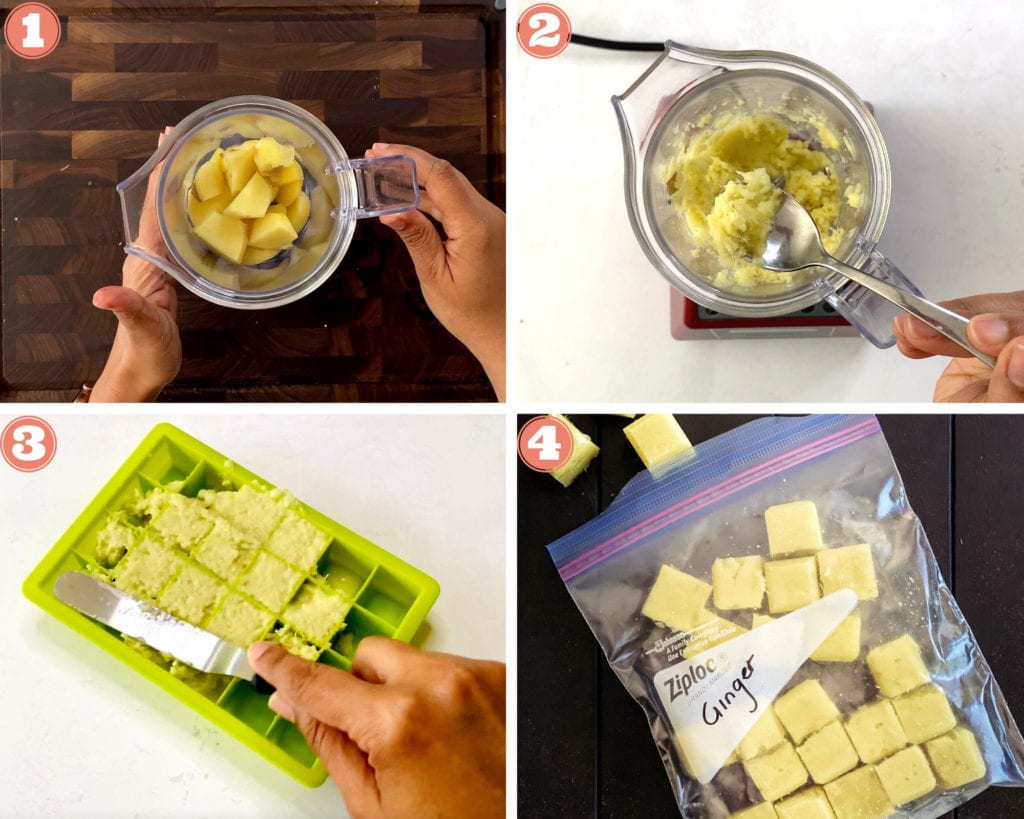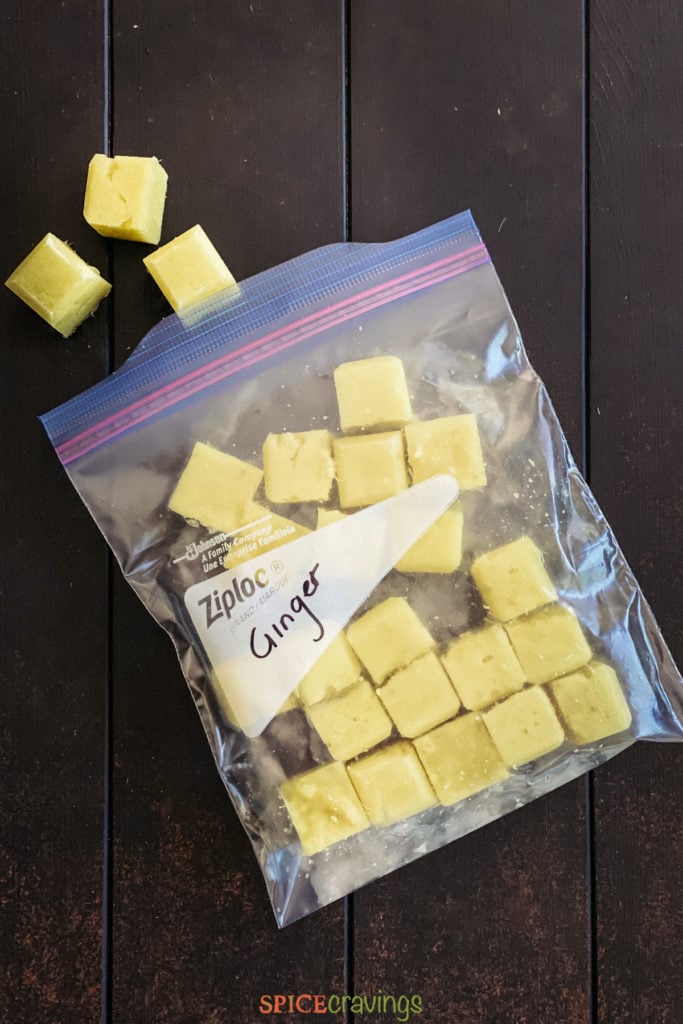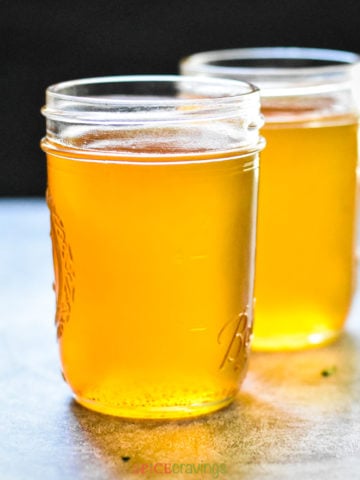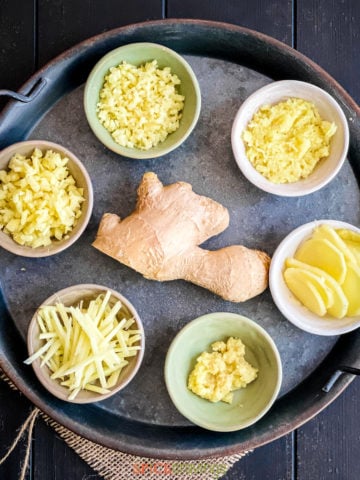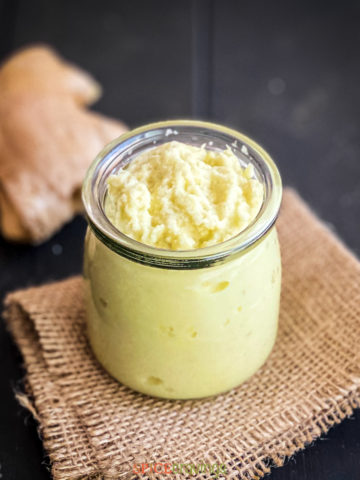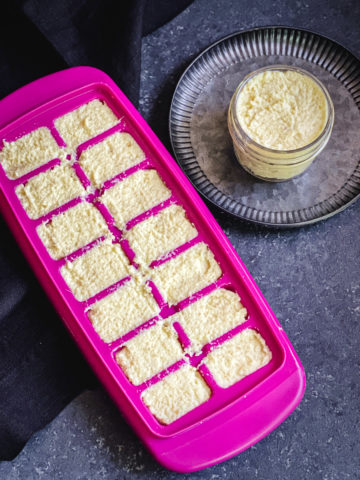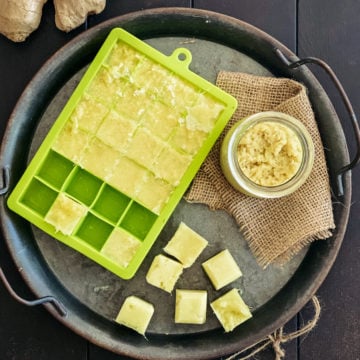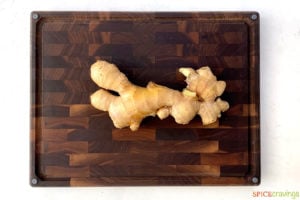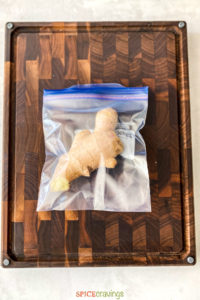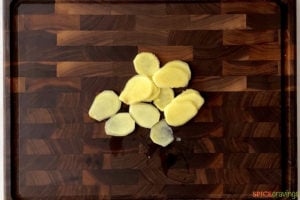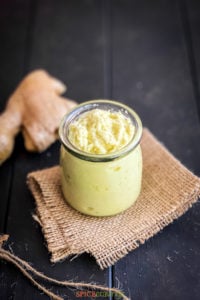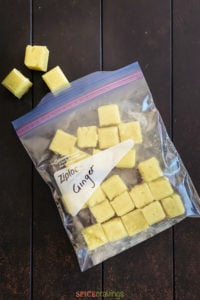Let’s talk about ginger!
Ginger root is one of the foundations of Indian and Asian cuisine and I use it in just about every one of my recipes. I love it for its somewhat woodsy yet sweet pop of flavor. Since many of my readers have asked me how to store fresh ginger and what to do with leftover ginger, I thought it would be useful to share my tips and tricks on this incredible root. And once you’re done reading through, continue on to finish the series with How to Cut Ginger and How to Make Ginger Paste or Ginger Garlic Paste. You can find more recipes on kitchen basics and common “how-tos” in the Cooking 101 Series. After reading this post, you’ll never throw out this spicy golden root again!
What is Ginger?
Ginger is a flowering plant that is a member of the Zingiberaceae family, which is closely related to turmeric, cardamom and galangal (Thai ginger). The root, or rhizome, is what we use as the spice. It is jagged and oddly shaped, with a light tan outer peel and golden yellow middle.
How to Use Ginger - What Does it Taste Like?
Ginger can be used in just about every form - fresh, frozen, dried, powdered or as an oil or juice. It adds a spicy, sweet, warming flavor, which makes it the perfect addition to both sweet and savory recipes. It is also common to use in beverages, and is one of the primary ingredients in Ginger tea and Masala Chai.
Health Benefits of Ginger
Ginger has long be touted for it’s abundance of health and nutritional benefits. According to Healthline, ginger:
Contains gingerol, an essential oil with powerful antioxidant and anti-inflammatory properties.Can treat nausea, aid digestion and help fight infections, including the flu and common cold.May help to aid in weight loss as there are signs pointing to its effects to increase metabolism or reduce inflammation.May help improve brain function and protect against Alzheimer’s disease.
How to Buy - Tips & Tricks
The large ginger roots you typically see in the produce section of larger supermarkets are lighter in color and flavor when compared to the ginger sold in India. This is more consistent with organic ginger, which is smaller, brighter and spicier. When I can find it, I go for the organic variety. A few tips to keep in mind when buying fresh ginger:
The root should be firm and heavy for it’s size.The knobs should be smooth and shiny, with no signs of bruising or mold.Steer clear of any ginger roots with wrinkles on the outer surface (this is a sign the ginger has started to deteriorate).Purchase from Indian or international markets, as the prices are usually better.A 1-inch piece of ginger is the equivalent of 1 grated Tablespoon - a nice ratio to keep in mind when looking for the right size.That being said, every piece of ginger varies in size, so pick up a large or small one depending on your needs.
Fun Fact: The entire root end is known as a hand of ginger, while the jagged ends are called a knob of ginger. When a recipe calls for a knob, it is typically referring to a 2-inch piece. A thumb of ginger is a 1-inch piece.
Where to Buy
Ginger is easily available in both specialty Indian grocery stores and major supermarkets. If you’re looking for organic ginger, it’s easy to find at Trader Joe’s, Whole Foods or Costco. I have found it at Whole Foods in the prepared produce section in small plastic containers. Dried Ginger Substitute: Can’t find fresh ginger at the grocery store? For every 1-inch piece (or 1 grated Tablespoon) of fresh ginger, use ¼ teaspoon ginger powder. Just know that the flavor will be slightly different.
How to Store Fresh Ginger
Ginger is easy to store on the kitchen counter, in the fridge or in the freezer. As soon as I get home from the grocery store, I wash the outer surface of the ginger root and leave it on my counter to dry out. You can also dry it with a clean kitchen towel. You want to make sure it is completely dry before storing it following any of the methods below.
How to Store Ginger Root
Kitchen Counter: If I know I am going to use it in the next few days, I store fresh ginger root on the kitchen counter or in a cool, dark place (typically with my potatoes, onions and garlic). But for longer storage, go for the fridge or freezer. Refrigerator: Place the unpeeled ginger root in a plastic storage bag or airtight container, seal tight and stash it in your crisper drawer. The ginger should last up to 1 month. Just make sure to check it for mold before using. If you’re looking to get ahead, you can also peel the ginger first, then store as directed, but the ginger will not last as long. Note: I have also tried the method of wrapping the ginger root in a paper towel, then in plastic wrap, but the Ziplock storage bag works best for me! Freezer: Peel the entire ginger root, then place it in a freezer-safe plastic storage bag or airtight container, seal tight and place it in the freezer. The ginger should last indefinitely. When ready to use, there is no need to thaw! Simply grate the amount of ginger you need (it’s actually easier to grate with a Microplane from frozen) and place it back in the freezer, making sure to squeeze out all the air.
Storing Ginger Slices
Ginger slices are a nice way to get ahead, especially when you want to use them to steep tea. Peel and slice to your desired size, then place in a plastic storage bag or airtight container, seal tight and place in the vegetable drawer. The ginger should last a few weeks. For longer storage, place the sealed plastic bag or container in the freezer. Use right from frozen in your recipe.
Storing Ginger Paste
Ginger paste is another meal prep trick so you’re one step ahead when planning to cook your recipe. To make ginger paste: Peel the entire ginger root from top to bottom (feel free to leave the peel intact), then cut into slices for easier blending. Place the ginger slices in a blender or food processor and blend to your desired texture (coarse to super-fine). There is enough water content in the ginger root that you do not need to add any water. That being said, it is a good idea to blend a larger portion of ginger rather than smaller. There is not enough water to blend to the right consistency when using a small quantity. Check out Ginger Paste recipe to learn more about how to store in the fridge and freezer, and how to use it! To peel or not to peel? Through my research, I have found that peeling ginger is optional. Although not peeling it saves a step, I prefer to peel the ginger root partially, especially if it has a thicker skin since that alters the taste and texture. This is more about personal preference, so feel free to do what works for you!
Recipe Tips & Notes
More Cooking 101 Recipes
This post is part of the Cooking 101 Series. Check it out for more time-saving Meal Prep recipes.
📖 Recipe
